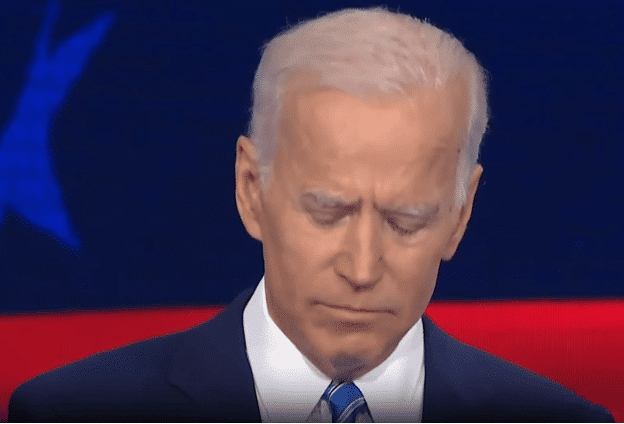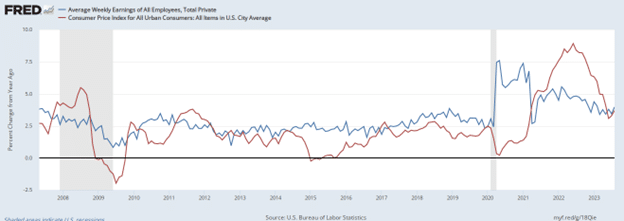September 14, 2023
Permission to republish original opeds and cartoons granted.
Biden’s Economic Record Has Cost Him Big with Women and Swing Voters

By Manzanita Miller
It’s no secret that President Biden’s polling numbers are not where Democrats hoped they would be at this point in the election cycle. Recent large, national polls have found Trump beating Biden by six points in the past two weeks, while other polls show Biden neck-and-neck with Trump.
Despite a slew of indictments and controversies lobbed at Trump by those in power, he is polling better today than he was in the 2020 election. Biden, meanwhile, continues to lose support from key coalitions of his base including minorities, independents, young people and perhaps most troubling for Democrats’ election prospects, women.
Biden won women as a group by 15 percentage points in 2020 but polls from various sources show him down by close to that amount with women now, and the rising cost of living is a massive contributor to his upside-down approval rating among women.
Comparing data from shortly after Biden took office to the present, Biden has lost eight points with women according to YouGov. The New York Times released a recent poll that shows Biden’s numbers have slipped even farther with women – 14 percentage points, according to the Times. This indicates Biden’s advantage over Trump with women may have evaporated all together.
What could be driving such a decline in support among women? While much of the country, including a plurality of Democrats, want Biden replaced on the Democratic ticket because they do not believe he has the ability to lead, economic issues are at the core of his sinking ratings with women. Out-of-control inflation, the rising cost of healthcare, and job uncertainty are hitting women hard, and Biden’s numbers among women are plummeting.
According to YouGov surveys, the number one issue to women, even more so than men, is inflation and the prices they pay for household goods. Women are still more likely to handle shopping than men are and are acutely aware of the rising cost of everyday items like groceries and household supplies.
Solving the rising cost of living is the number one issue to women out of a slate of 15 issues, with 25% of women saying solving inflation is the most important issue to them compared to 21% of men. Women are also concerned about healthcare (11%) and jobs and the economy (11%). Abortion, an issue Biden continues to make central to his Administration, is the priority for only 7% of women.
While women want inflation solved, most are not impressed with Biden’s response to the rising costs of living. Women disapprove of Biden’s response to inflation by a staggering 28 percentage points (61% to 33%) and they disapprove of Biden’s handling of the economy by eight percentage points (50% to 42%) according to YouGov. Biden doesn’t poll particularly well on healthcare either, with women disapproving of his Administration on healthcare by 5 percentage points (46% to 41%).
Women also have a lower opinion of the economy than men do by 6 percentage points, with 51% of women compared to 45% of men saying the economy is in ‘poor’ condition. Just 3% of women compared to 6% of men say the economy is in ‘excellent’ condition, according to the poll. While both men and women say inflation and unemployment are huge issues, women are eight percentage points more likely to say inflation and unemployment are equally troubling, with men more likely to cite unemployment as their number one concern.
This comes on top of previous polling showing Biden has lost significant support among women, Hispanics, Blacks, Independents, and young people. According to the recent New York Times poll, Biden's lead over Trump in comparison to 2020 exit polls has dropped by 14 points among women, 30 percentage points among Hispanics, 16 points among Blacks, 14 points among voters under 30, and 8 points among Independents.
The Biden Administration’s economic policies are eroding support among one of their largest constituencies, and losing at the margins with women could cost Democrats the election unless they course-correct. Women have a particularly bleak view of the economic outlook and are acutely aware of the rising cost of living over the past three years.
Democrats’ focus on abortion did not galvanize women the way they hoped in the midterms, and Biden’s focus on it isn’t raising his approval ratings now. Economic issues and particularly economic perceptions will play a huge role in 2024, and women have bleak views on Biden’s record there.
Manzanita Miller is an associate analyst at Americans for Limited Government Foundation.
To view online: https://dailytorch.com/2023/09/bidens-economic-record-has-cost-him-big-with-women-and-swing-voters/
Cartoon: Swamp Keeper
By A.F. Branco

Click here for a higher level resolution version.
To view online: https://dailytorch.com/2023/09/cartoon-swamp-keeper/
Video: Governor’s Rogue Assault on Constitution

To view online: https://www.youtube.com/watch?v=BOup9spM7K0
Video: Biden Found Guilty Of Violating Constitutional First Amendment Rights

To view online: https://www.youtube.com/watch?v=pR8P2N7Cs_k
Worse off than 4 years ago: Household median income down 2.3 percent in 2022 to $74,580 as consumer inflation pops up to 3.7 percent in Aug. 2023

By Robert Romano
Household median income took a major hit in 2022, dropping 2.3 percent to $74,580, amid high inflation that peaked at 9.1 percent annualized in June 2022, according to the latest figures from the U.S. Census Bureau.
The news comes as inflation is once again heating up in the U.S. economy, with consumer prices rising 3.7 percent annualized in August according to the Bureau of Labor Statistics, up from 3.2 percent in July and 3.0 percent in June, as oil and gasoline prices have once again started increasing. In the past month, gasoline prices increased 10.6 percent and fuel oil increased 9.1 percent.
In addition, transportation services were up 2 percent and medical care commodities increased 0.6 percent, while food increased another 0.2 percent.
Even taking food and energy out of the equation, core inflation grew at 0.3 percent and has grown 4.3 percent the past twelve months.
Which is what happens when you print, borrow and spend close to $7 trillion for Covid into existence since the beginning of 2020 at the same time the global economy was locked down and production halts exacerbated the global supply chain crisis for months and years. All told, the M2 money supply, which peaked at $22 trillion after it increased dramatically from $15.3 trillion in Feb. 2020 to a peak of $22 trillion by April 2022, a massive 43.7 percent.
It was too much money was chasing too few goods, the literal definition of inflation. Prices had cooled to 4.9 percent in April, 4 percent in May and 3 percent in June, following the price surges of 2021 and 2022, when consumer inflation first rose above 5 percent annualized in June 2021 to 5.4 percent, up to 7.5 percent by Jan. 2022 immediately prior to Russia’s invasion of Ukraine, and peaking at 9.1 percent in June 2022.
Now, amid higher interest rates—30-year-mortage-rates are up to 7.1 percent, for example—the M2 money supply has actually been shrinking after its April 2022 peak, down 5.8 percent to $20.75 trillion.
The problem is that it’s still 35.6 percent greater than Feb. 2020, and still well above the historical trendline. Prior to Covid, going back to 1981, the M2 money supply would grow at 5.9 percent annually on average. Right now, it’s still averaging 10.9 percent annualized growth since Feb. 2020, hence the continued runup in prices in some quarters.
Producer prices also saw a notable uptick in August, increasing to 1.6 percent annualized, up from 0.8 percent in July, amid a single-month 10.5 percent increase in energy costs and a 1.4 percent increase transportation and warehousing costs.
And it all hurts U.S. households, whose income was outstripped by prices in 2021 and 2022, according to Bureau of Labor Statistics data. Prior to Covid, average weekly earnings were growing at 2.5 percent on average since 2007, while consumer prices grew at 1.8 percent, representing an overall improvement in household budgets all the way to the end of 2019.

But after Covid, the picture shifted dramatically, where although average weekly earnings annualized are up 4.9 percent, consumer prices have been growing even faster, at 6 percent annualized since.
In other words, the American people are definitively worse off than they were four years ago, and with the 2024 presidential election looming, so are President Joe Biden’s chances of getting reelected.
Robert Romano is the Vice President of Public Policy at Americans for Limited Government Foundation.


